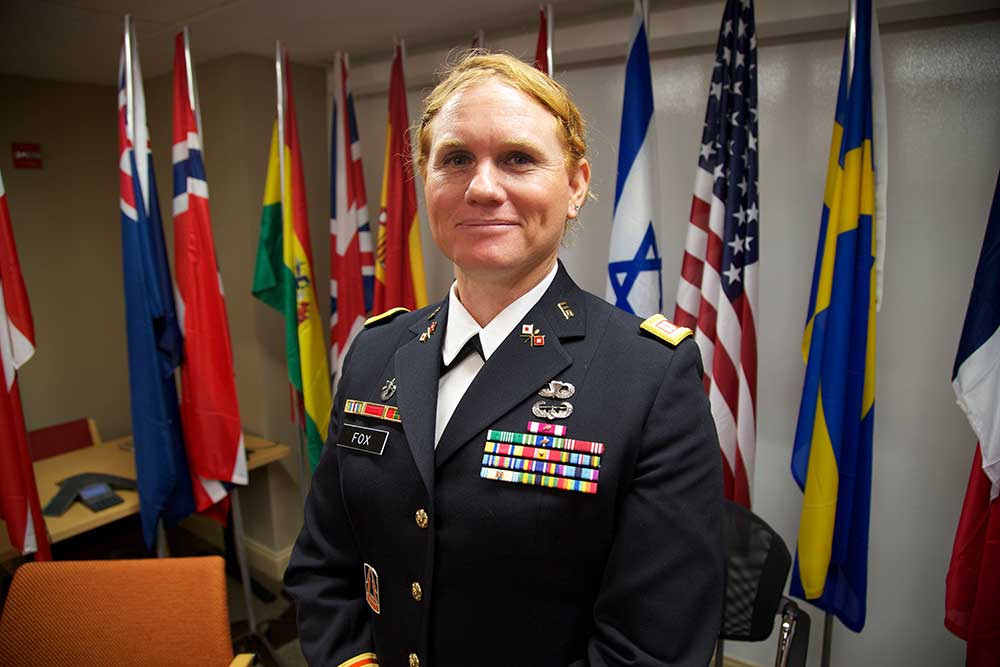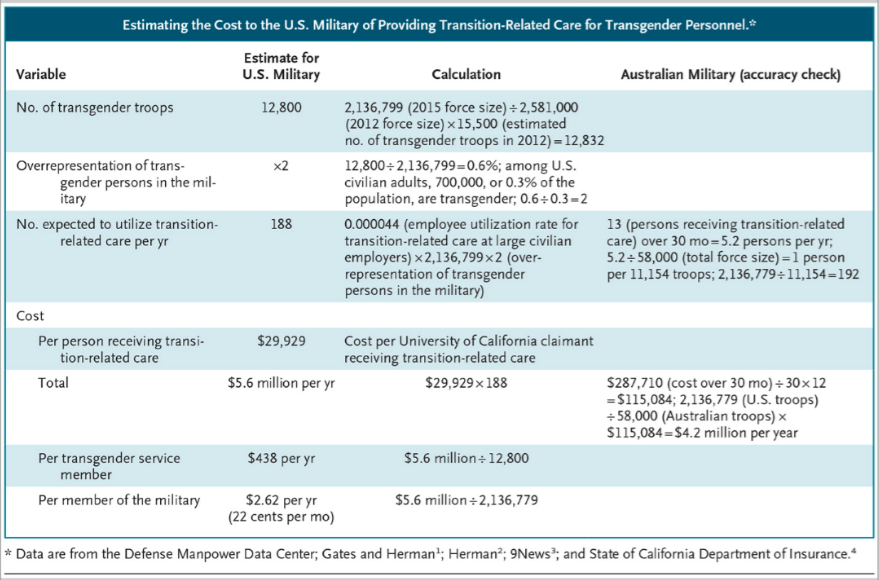New England – According to a report published in the New England Journal of Medicine, transition care for transgender members of the US military, would cost around $5.6 million annually.
Aaron Belkin, the study lead author and academic at San Francisco State University, stated that the amount would be of just 22 cents monthly per service member, as the military’s annual health budget is of $47.8 billion.
In July, defense chief Ash Carter supported the admission to the US military of transgender people for the first time in the history of the country, “with the presumption that transgender persons can serve openly without adverse impact,” he said. As for now, the study estimated that 12,800 transgender people serve in the US armed forces.

Many have criticized Carter decision, for example, presidential candidate Mike Huckabee said, “I’m not sure how paying for transgender surgery for soldiers, sailors, airmen, marines, makes our country safer.”
From the population of transgender people serving in the military, the analysis calculated that an estimated of 188 transgender service members would require some type of transition-related care annually.
As a reference for the report, the experts stated that the Australian military covers the cost of transition-related care. Currently, an average of 1 service member out of 11,154 per year are transgender.
To calculate the cost of care, they determined the average cost of transition-related care (surgery, hormones, or both) per person needing treatment which was $29,929 over 6 and a half years. By comparison, over a 30-month period, the Australian military paid U.S. $287,710 for transition-related care for 13 service members, or $22,132 per person requiring care.
Under these estimations, to offer transition-related care to the 188 military personnel expected to require it annually in the US, it would cost about $5.6 million per year, or $438 per transgender service member annually, meaning 22 cents monthly per member. If the Australian military’s annual cost of transition-related care is applied to the US armed forces, the Pentagon could expect to pay $4.2 million annually to provide such care.
In this image offered by the journal the calculations can be scrutinized.

The report also determined that transgender people are twice as common in the military that in than in the general population. “This is possibly because many transgender women – those born male but identifying as female – seek to prove to themselves that they are not transgender by joining the military and trying to fit into its hypermasculine culture,” Belkin said.
Regarding to many criticism as observers debate over the concept that the military should pay or not for transition-related care, the report stated “Even if actual costs exceed these estimates on a per-capita basis for persons requiring care, the total cost of providing transition-related care will always have a negligible effect on the military health budget because of the small number treated and the cost savings that the provision of such care will yield. The financial cost of transition-related care, in short, is too low to matter”.
Source: New England Journal of Medicine

At this time, the topic is on the table for all current candidates for the presidential nomination to discuss, and if the cost to provide transition-related care to transgender people serving in the military could be “too low to warrant consideration in the current policy debate,” which could lead to several negative repercussions.
Hi Juan,
I understand that the budget is based on 12,800 people and the estimated cost is $438 per person annually, making for a budget of $5.6 million. See the quote below.
“to offer transition-related care to the 188 military personnel expected to require it annually in the US, it would cost about $5.6 million per year, or $438 per transgender service member annually”
If those 188 use all $5.6 million as stated in the article, then the real cost per person for that group would be almost $30,000. Now, if you look at the total cost for the 188 in terms of all 12,800 people and spread the cost out among everyone (even those not requiring care) it brings the cost down to $438 per person. The quote is confusing in that it makes it sound as if the cost per person is only based on the 188 people requiring care.
Dear Shelly,
As we did before, we encourage you to check the release of the study in the journal were it was published, the link is on the article. We understand your concern but the article is based on the study’s abstract so the information is correct. However, we added an image that shows the exact calculations so that committed readers, like you, have the details at hand to better understand the information you are looking for.
Again, we appreciate your observations
Kind regards.
$5.6 million negligible? If so, send it to me. I can make good use of it! What a ridiculous waste of time and money.
Something doesn’t add up.
“Under these estimations, to offer transition-related care to the 188 military personnel expected to require it annually in the US, it would cost about $5.6 million per year, or $438 per transgender service member annually, meaning 22 cents monthly per member. ”
188 x $438 = $82,344 or $5,600,000 / 188 = $29,787.23 per person
It would cost $29,787 per year. That’s $2,482.27 per month and not the 22 cents you suggest.
Ok Shelly, these calculations are not that easy. You have to do it this way: $5,600,000/12800(number transgender service member)= $437,5 per year. Why? Because they estimate that if all the transgender members would do it yearly (in the same year) the cost would be $438 per year. However, they estimated also that only 188 members would require it, for other reasons. Remember we are talking about budgets, so when you prepare a budget you have to count everyone in case you (the U.S army) need to use that money in the future. So the point is, they are implying that the military should only reserve for this concept $5.6 a year in their budget, in case all 12,800 transgender members want to apply for care services over the year. I know is tricky. We would try to explain better this kind of confusing results so our readers understand better. Nontheless, I encourage you to visit the journal where the study was published to have a better approach, we put the source at the end of the article. Thanks for your comment, we recognize its value.